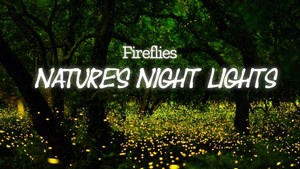Fireflies are neither flies nor bugs - rather, they are beetles that glow to deter predators/communicate. Read more about bioluminescent animals here!

We have all seen the movie Finding Nemo with the scary angler fish that lights up in the deepest part of the ocean. Though extraordinary living creatures such as these can be odd or even dangerous, reasons behind why they glow are very fascinating.
Methods of How Animals Emit Light
Bioluminescence
Bioluminescence has to do with when a living organism produces its own light. This process is usually generated by a chemical reaction in the organism’s body which is caused by oxygen reacting with luciferin substance. In return, it creates energy in light form.
As previously mentioned, fireflies emit their own light to deter predators and communicate to each other. In general, bioluminescence is employed either to do this or to identify prey. Both of these processes are incredibly vital aspects of any organism's way of life.
Biofluorescence
Biofluorescence has to do with when a living organism absorbs and reemits light which humans can see - as opposed to creating the light itself. The light they reemit is usually visible in green, orange, or red colors.
Biofluorescence serves as a way for animals to attract mates, hunt prey, disguise themselves with camouflage, and more.

What Animals Use Bioluminescence?
Fireflies
These insects are commonly found in yards; especially where there are large amounts of high grass and shrubbery. The light emitted by fireflies is sometimes referred to as “cold light” because it doesn't generate heat. There are many different species of fireflies and some of them even pollinate.
Angler Fish
These fish are found in the dark depths of the sea and have sharp teeth and a light-producing appendage that sticks out above their mouth. This organ glows to attract other organisms into the angler fish’s mouth. Similarly, there is a symbiotic relationship that takes place wherein the illuminated organ protects bacteria that produces light to lure food for the fish.
See? They're not so scary... they're actually kind of sweet! ;)
Glowworms
Glowworms exist under rocks typically in New Zealand and other parts of Australia. They capture prey with blue glowing threads that hang and are sticky - almost like silky webs from a spider - and other small insects will get caught in this web until the glowworm can reach it and... well, you can picture the rest.
Dragonfish
These fish live in deep parts of the ocean and can emit red light from their eyes. These fish carry bacteria that produce this red light through a complicated chemical process. Furthermore, due to the dragonfish's dark and dingy appearance, they have a unique advantage that helps them stay camouflaged - aside from their eyes, of course.

What Animals Use Biofluorescence?
Hawksbill Sea Turtle
There are different types of sea turtles but the Hawksbill Sea Turtle can live up to 50 years and weigh as much as 150 pounds. Currently, these marine animals are endangered and their population is slowly decreasing due to a loss of habitat from pollution and climate change.
Platypus
Interestingly, platypuses have waterproof fur that absorbs UV light which is then emitted as a blue color humans can see. This light is usually absorbed from the sun. These animals also swim with their eyes closed and the males have spurs that are venomous.
Scorpions
Despite the fact that these arachnids are scary and venomous, they also absorb UV light from the sun and re-emit it with a green glow. Their stingers are used to kill prey and to defend themselves. Though it doesn’t happen often, a scorpion sting can kill a human so be careful next time you encounter one of these!
Conclusion
It is truly incredible how the chemical reactions of bioluminescence and biofluorescence work in a variety of different animals and insects. This process plays a major role for all the different organisms in our environment today as it protects and defends them so they can survive.
But remember, if you ever face an angry platypus, just try not to get in its way!






